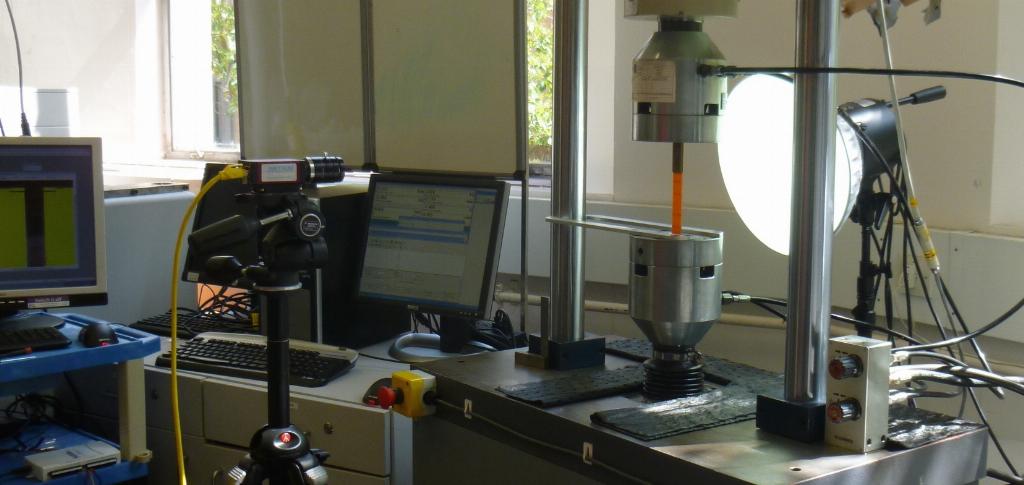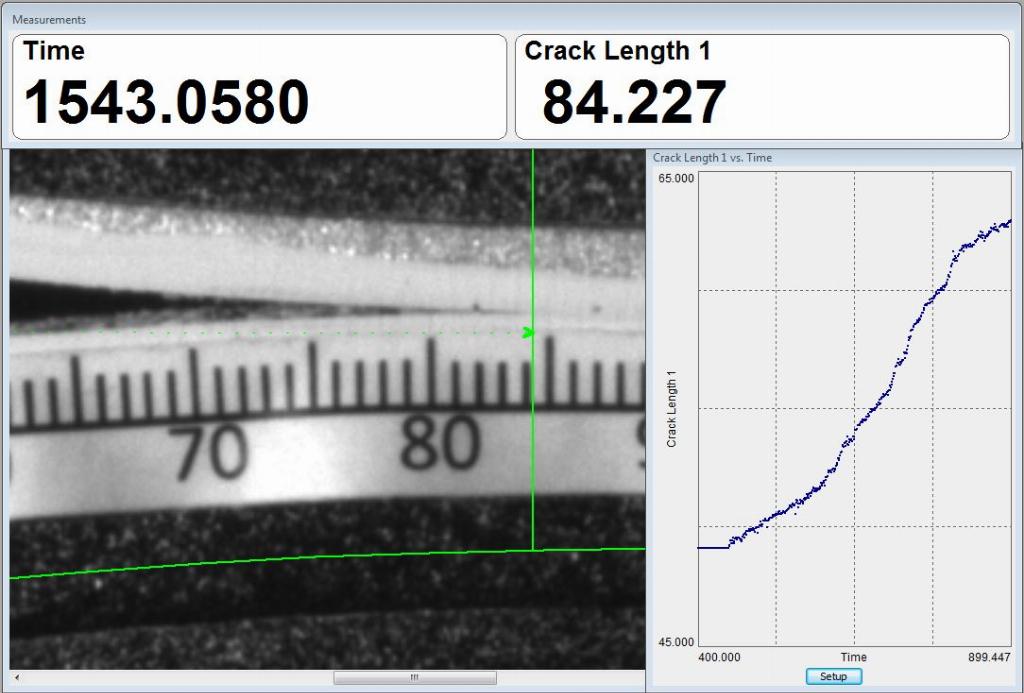On the mend

Rafael Luterbacher, Tim Coope, Richard Trask and Ian Bond of the Advanced Composites Centre for Innovation and Science (ACCIS), University of Bristol and Imetrum’s Paul Waterfall, explain how self-healing cross-ply laminates are offering encouraging test results for aerospace manufacturers.
Understanding and increasing composite material lifespan is vital for wider adoption. Fatigue induced micro cracks can cause failures and are hard to detect and repair. Testing has demonstrated early promise for self-healing composites able to recover properties such as interlaminar fracture toughness.
There is a rapid uptake of composite materials being observed in industry, including many fatigue limited applications such as aerospace components, wind turbine blades and automotive parts. The use of advanced fibre reinforced polymers in industry to exploit their high strength and stiffness with low-weight penalties will also see an improved buckling stability and resistance to bending. The high strength to weight ratio and resistance to corrosion are further key factors behind this uptake, combined with an appreciation of the lifetime cost savings. However, there are still question marks around material longevity and the ability to assess damage in composite structures.
Intralaminar damage or transverse matrix damage is one of the first damage mechanisms to occur in fibre-reinforced polymers. Even though the effect on the mechanical properties is limited, it acts as an initiation point for subsequent internal damage propagation. This interlaminar damage is particularly difficult to detect and means that more serious damage can develop prior to a problem being identified. At present, this is mitigated by using conservative safety factors in design but this leads to higher cost and weight. One way to eliminate this problem is to produce materials with an internal self-healing/repair or damage control mechanism. In concept, self-healing materials have the ability to repair structural damage caused by mechanical usage. A material that can mitigate damage will lead to safer composite structures, and will also provide lower maintenance costs for composite material related industries, both in terms of inspection and repair. This has the potential to boost confidence in fibre reinforced composite materials, and increase the rate of adoption across the aerospace industry.

Art imitating life
Researchers from the Advanced Composites Centre for Innovation and Science (ACCIS) at the University of Bristol have been looking at materials that heal or repair in a quasi-autonomous way for about 15 years. The concept behind this work mimics blood vessels and the haemostasis process in living creatures. Upon damage, internal cavities (vascules) release a healing agent with the ability to re-polymerise and thereby repair and re-bond internal damage fracture sites. The team have been exploring intralaminar damage arising under tensile loading in cross-ply laminates, both for static and fatigue loading. The method used involves automated injection of a self-healing solution through small micron-sized channels (vascules), contained within cross-ply laminates (Figure 1) and skin-stiffener debond specimens (Figure 2), using epoxy resin-based healing agents to activate the repair process.
As part of their investigations, the team found that the UVX Flexi system, powered by Video Gauge software from video measurement specialists Imetrum was vital for their data collection.
Speaking about the capability of this non-contact, video measurement technology, the ACCIS team said: “Video Gauge software can be used to extract deformation and strain data from any test, irrespective of scale, so long as a stream of images can be obtained. For low speed testing on conventional test machines this data can be extracted in real time up to at least 300Hz. It can also be used in conjunction with the high speed camera post-test. When coupled with a miniaturised test machine and a metallurgical microscope this gives us the capacity to carry out very fine scale studies of the strains within loaded composites at the meso and micro scales.”
For this particular research, the static testing used Imetrum’s system to determine the material properties. Specimens were loaded to 15kN (340MPa, corresponding to 75% of the failure stress) and then unloaded under displacement control at a rate of 2mm/min. The benefits of using this approach over other measurement devices such as a clip on extensometer or strain gauge include:
- Avoiding problems of clip-on devices that can compromise the result, such as knife edges slipping or causing damage to the specimen.
- Eliminating the operational challenges of using strain gauges, such as the high skill levels required to bond effectively, and aligning the gauge precisely with fibre directions.
- Measuring through failure without risk of damage to the equipment.
- Permitting full visual observation of the specimen during test.
- Time and cost savings, with minimal sample preparation.
All of these factors are only of benefit if the video extensometer is able to measure at sufficient resolution for the low strains involved when operating within the elastic region of composites, which is no problem for the UVX flexi, which often passes through calibration with an accuracy of better than 1µm. The static test results from this study showed that the self-healing polymer was initially able to recover between 67 and 75% of the initial stiffness, depending on the healing agent formulation used.

To assess fatigue performance, specimens without vascules were cycled for 100,000 cycles in total. The vascularised specimens were tested for 50,000 cycles and then the healing agent was injected. Specimens were re-tested following curing of the healing resin. These first 50,000 cycles indicated that no change in mechanical properties or damage formation was observed when a single vascule (representing 0.5% of the cross-sectional area) was included in the 0/90 interface. Under fatigue conditions post-healing, after around 2,500 cycles almost all of the restored stiffness was lost. This was caused by the high fatigue loading intensity, which was near the static failure strength of the healing resin. However, the potential for ameliorating (via self-healing or autonomous repair) more diffuse transverse matrix damage via a vascular network has also been shown.
Healing hands
The team at ACCIS are continuing their work to improve the self-healing approach, encouraged both by the early promise and the potential benefit of the technique. They will also continue to use Imetrum’s systems, investing in new equipment as they progress (the team at Bristol currently has three UVX Flexi video extensometers). One potential future investment would be the inclusion of Imetrum’s newly launched crack length gauge into their existing systems.
This gauge is the first of its kind in the world, and has received a glowing review from Dr Tim Coope: “The Imetrum crack-tracking software is a game-changing product for researchers investigating the fracture mechanics of Mode I double cantilever beam (DCB) test specimen coupons [Figure 3]. For what was once a laborious, time-consuming and non-automated process to correlate crack length with failure load and displacement, this technology enables the output of these test data values into a simple text file.”
To conclude, the benefits of this type of self-healing approach are highlighted by the research’s ability to realise multiple healing events. Whilst there are many challenges when deploying self-healing into structural applications, there is evidence to show that there is the ability for composite materials to recover from damage events by introducing a healing agent through a vascular network.






